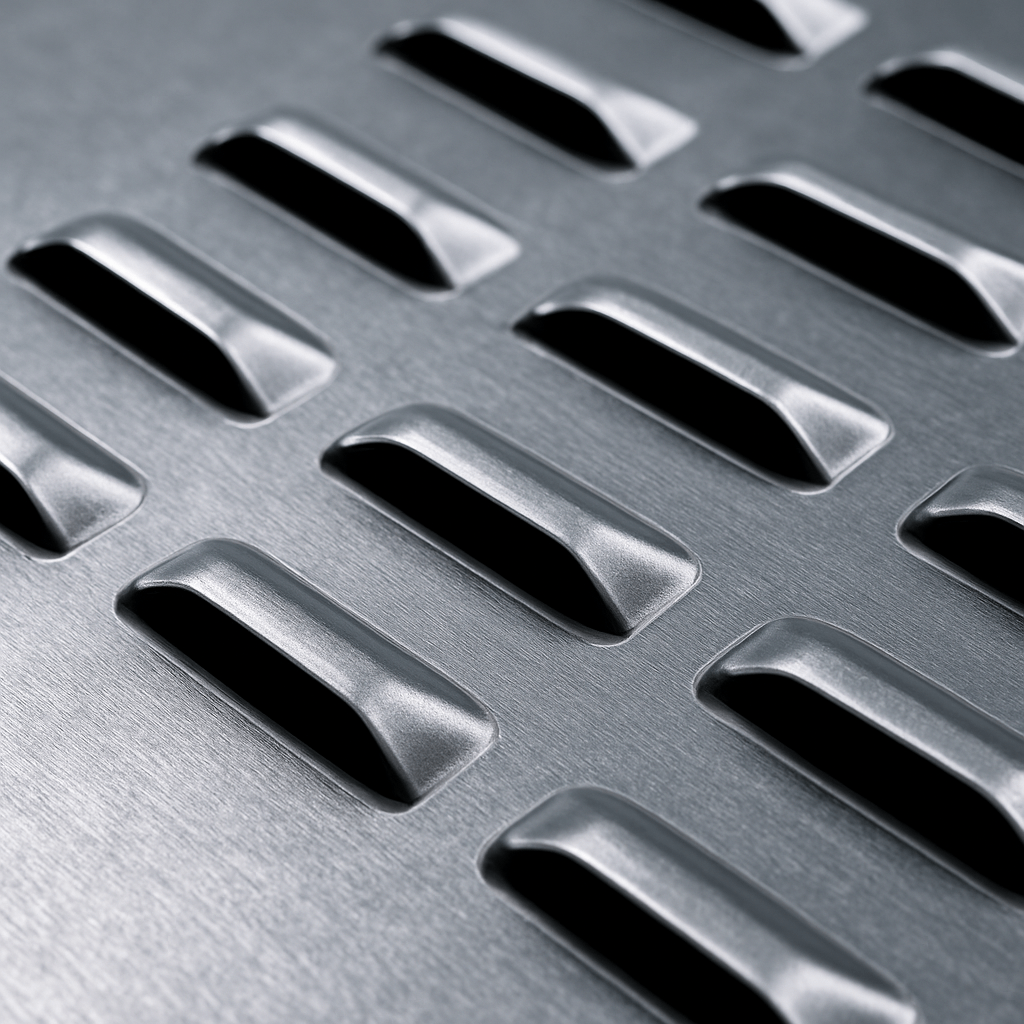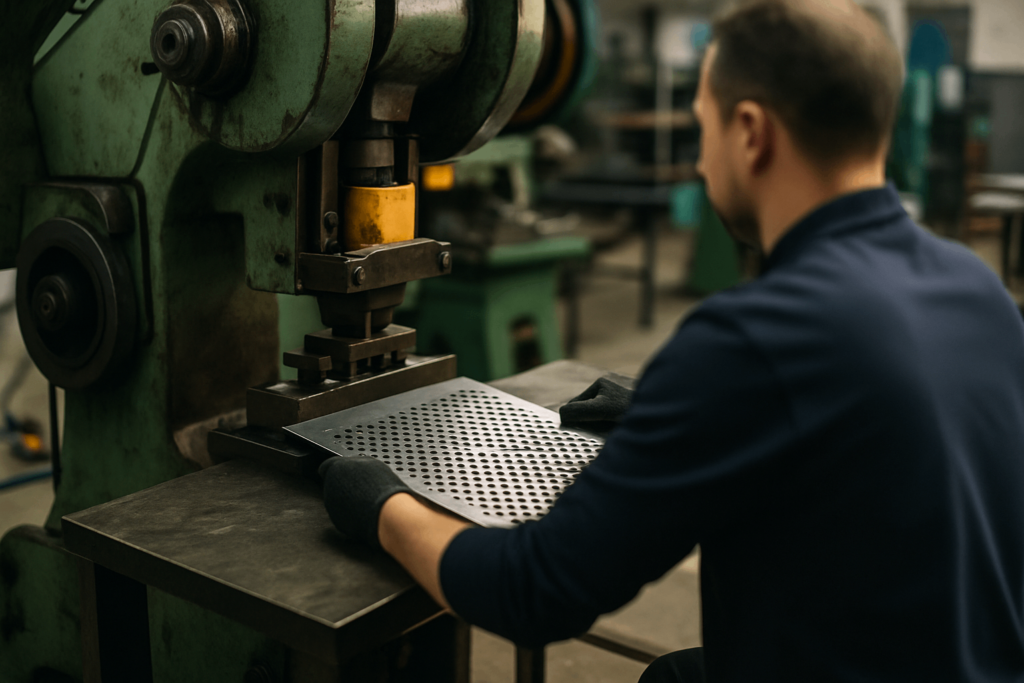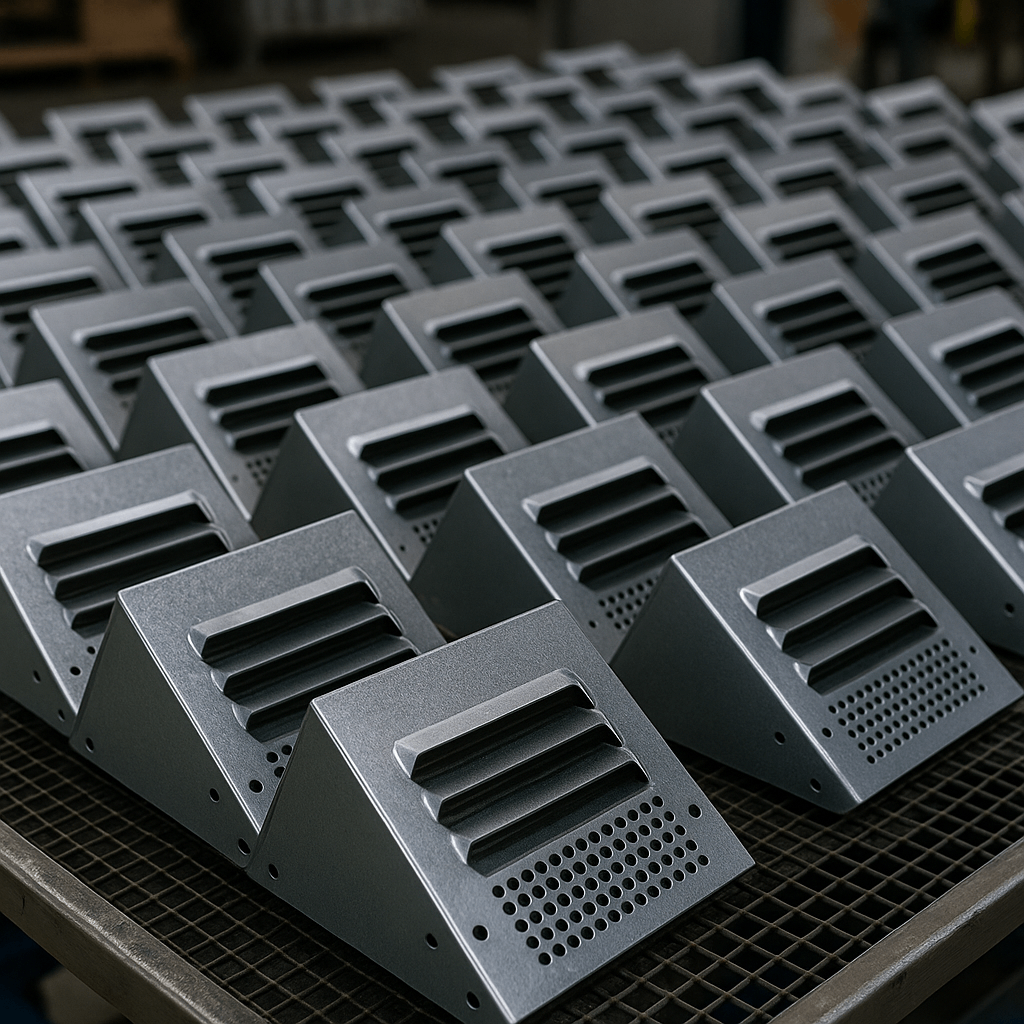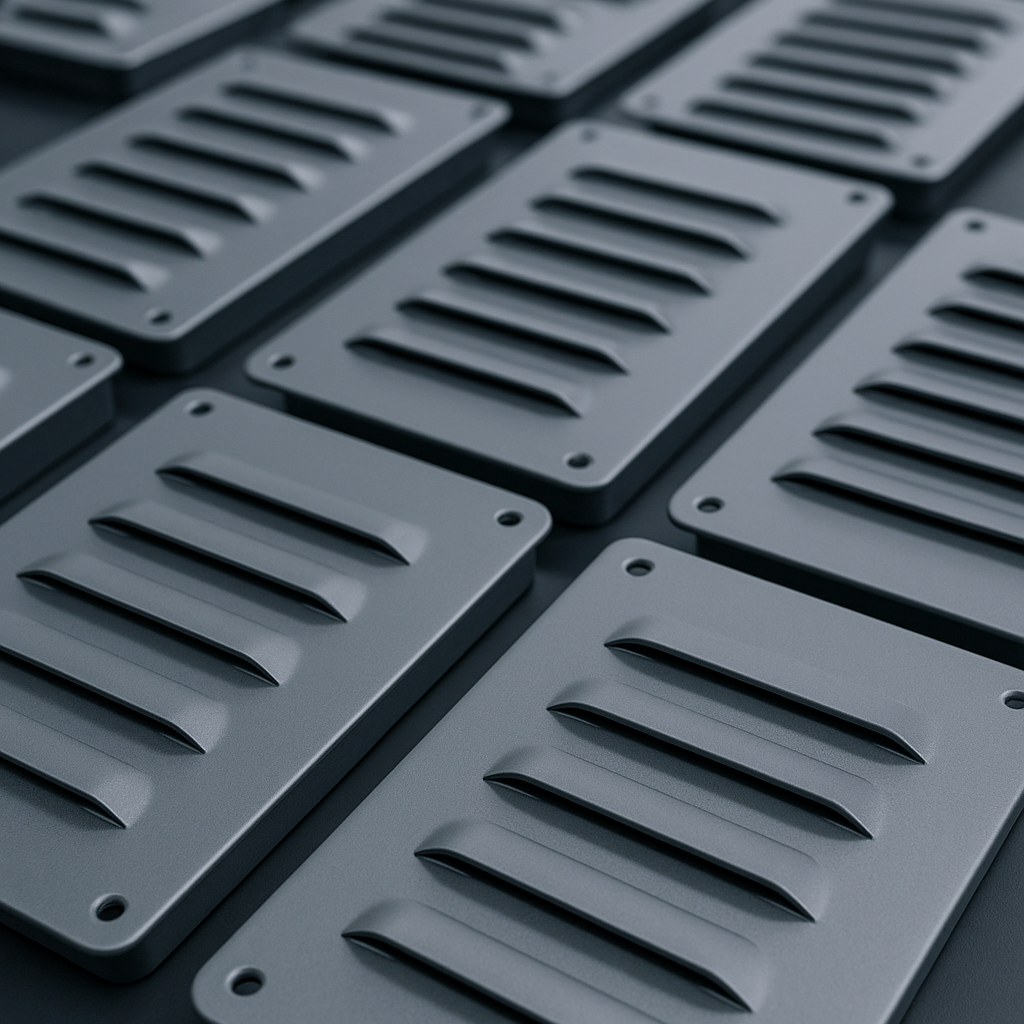For international buyers sourcing from sheet metal manufacturing companies, louvers—though small—play a crucial role in determining product performance and production efficiency. Their application in airflow, reinforcement, and shielding directly affects cost, manufacturability, and turnaround time, particularly in large-volume orders.
YISHANG works closely with procurement teams worldwide to streamline louver integration and help simplify sourcing complexity. This guide delivers actionable strategies to reduce production risk and improve sourcing efficiency.
What Louvers Actually Do—and How They Impact Supply Chain Costs
Louvers allow controlled ventilation while protecting internal assemblies from environmental exposure. Unlike perforations, they’re formed into the sheet metal, enhancing rigidity and reducing the need for thicker materials. These benefits are critical in telecom enclosures, vending kiosks, and automotive sheet metal parts.
It’s important for procurement teams to evaluate how variables like louver height, pitch, angle, and material interaction influence manufacturability and final cost. Poorly specified louvers can increase scrap rates, tooling adjustments, and delivery delays.
This alignment is especially relevant in server, kiosk, and automotive enclosures—where thermal and structural control must meet tight cost and delivery expectations.
Core Functions That Drive Procurement Value
Thermal Efficiency
Strategically placed louvers enhance natural airflow, eliminating the need for fans or vents in many enclosures. This passive cooling reduces BOM complexity, particularly valuable in custom sheet metal fabrication for electronic devices.
For example, precision sheet metal fabricators supporting telecom cabinets frequently deploy louvers to prevent overheating while reducing part count and energy consumption.
Protection in Harsh Environments
Louvers offer superior shielding against rain, dust, and debris without sealing off airflow. In agricultural equipment and outdoor electronics, they help achieve IP compliance without secondary gasketing.
Compared to perforations, louvers deflect water and resist clogging, providing longer-lasting performance in challenging conditions—an essential feature for buyers managing outdoor deployments.
Built-In Structural Reinforcement
The raised form of a louver alters sheet geometry, increasing rigidity and allowing material downsizing. This can yield significant savings in raw material weight and transport costs.
In one automotive application, YISHANG optimized a louver design that reduced sheet gauge by 20% while maintaining structural integrity—leading to a 14% material cost reduction per unit.
Design Mistakes That Drive Up Manufacturing Cost
DFM oversights are a leading cause of louver-related delays and cost overruns. Designs that ignore tooling capabilities or forming constraints often require revisions late in the sourcing cycle.
Frequent Issues We Resolve:
Overlapping spacing that requires non-standard tooling
Excessive form height leading to cracking, especially in aluminum
Paint build-up traps from poorly designed louver geometry
These errors lead to part rejections or rework, affecting delivery timelines and raising non-conformance risk and waste ratio. Early supplier review helps mitigate these risks.
DFM Strategies That Optimize Sheet Metal Procurement
Collaborating with your fabricator before finalizing CAD files ensures louvered features meet performance goals without compromising manufacturability.
Key Practices:
Spacing: Keep 1.0–1.5x louver length between units
Form depth: Stay within 40% of sheet thickness for consistency
Angle: 30°–45° range improves stability and appearance
Material match: Use stainless for corrosion zones; galvanized for weather exposure; aluminum for light-duty applications
Tool library: Leverage standard tools to avoid custom punch charges (~$2,000+)
YISHANG maintains an in-house tooling database with thousands of pre-validated louver forms used across telecom, electronics, and automotive programs.
Louvers vs. Perforations: Performance and Cost Comparison
For most sourcing decisions, choosing between louvers and perforations comes down to functional requirements, durability targets, and production strategy. The following comparison helps clarify application-specific decisions:
| Use Case | Louvers | Perforations |
|---|---|---|
| Directional airflow | ✔ | |
| Exposure to weather | ✔ | |
| Acoustic dampening needed | ✔ | |
| Minimal sheet deformation | ✔ | |
| Decorative appearance | ✔ |
Our engineers support sourcing teams with CFD (computational fluid dynamics) simulations to validate airflow efficiency between louvered and perforated models, aligning performance with cost goals.
Technical FAQ for Sheet Metal Buyers
1. Can standard tools avoid custom die charges?
Yes. We maintain a tool library compatible with most sheet metal fabrication processes, eliminating added die costs.
2. How fast can we get DFM feedback?
We return analysis within 24 hours for STEP, IGES, or SOLIDWORKS files.
3. Which materials are compatible with louvers?
Cold-rolled steel, aluminum, and stainless—each optimized with specific forming techniques to avoid springback or cracking.
4. Do you support both prototyping and high-volume production?
Yes, we handle everything from single sheet metal prototypes to multi-thousand-unit contract manufacturing.
5. How to prevent coating defects on louvered parts?
We recommend specific louver orientations and angles that minimize powder buildup and prevent pinholes or flow defects during surface finishing.
Want to validate your louver design in 24 hours? Send us your file.
Why Louvers Are a Strategic Detail in Global Procurement
In global sourcing programs, minor features like louvers often dictate whether a product meets quality, cost, and timeline expectations. Done right, they optimize yield, reduce labor, and improve mechanical performance.
Our approach enables procurement professionals to reduce supply chain complexity through upfront design validation and fast quoting. Whether you’re sourcing 100 sheet metal parts or scaling to 10,000, a well-specified louver saves time, reduces unit cost, and delivers functional value.
Need a second opinion on your louver specs? Upload your design for a free feasibility review.





